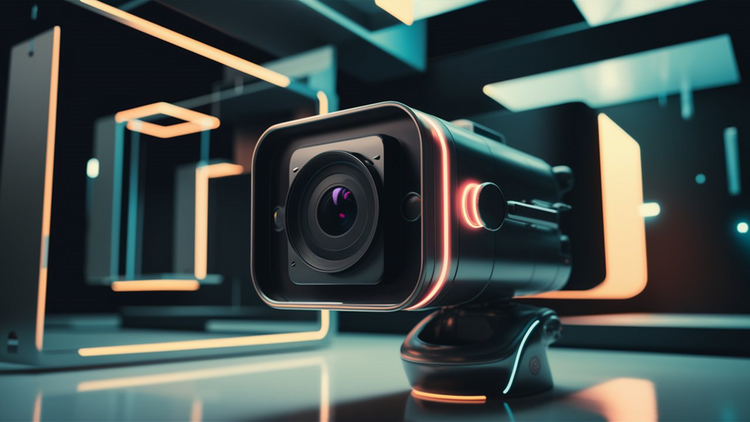How do 3D cameras work? 6 secrets (pros don't want you to know)

3D cameras have revolutionized imaging technology, enabling the capture of depth information to create immersive visual experiences.
These sophisticated devices leverage a combination of hardware and software techniques to perceive and reconstruct three-dimensional scenes.
Let's delve into the inner workings of 3D cameras and uncover the secrets that make them tick.
6 Secrets of 3D Camera Technology
#1: The Stereoscopic Principle
At the heart of 3D imaging lies the principle of stereoscopy, mimicking how human eyes perceive depth.
This fundamental concept involves capturing two slightly offset images of the same scene, simulating the binocular disparity experienced by our eyes. The brain interprets these subtle differences to create a sense of depth and dimensionality.
3D cameras employ dual-lens systems to achieve this effect, with lens separations typically ranging from 6mm to 30mm. This range approximates the average human interocular distance of about 63mm, allowing for realistic depth perception in captured images.
The Orbbec Astra 3D Depth Camera exemplifies this technology, utilizing two precisely aligned lenses to capture depth information accurately.
#2: Time-of-Flight Technology

While stereoscopy forms the foundation, many modern 3D cameras incorporate Time-of-Flight (ToF) technology for enhanced depth sensing.
ToF cameras emit short pulses of infrared light and measure the time taken for the light to return after reflecting off objects in the scene. This technique allows for precise depth mapping, with sub-millimeter accuracy at ranges up to 10 meters.
The Intel® RealSense™ Depth Camera D415 utilizes ToF technology, emitting light at a wavelength of 850nm and employing sophisticated phase shift measurement techniques to calculate depth.
This approach enables the camera to generate detailed point clouds and depth maps in real-time, making it ideal for robotics and augmented reality applications.
#3: Structured Light Projection
Another powerful technique in the 3D camera arsenal is structured light projection.
This method involves projecting a known pattern of light onto the scene and analyzing how this pattern deforms when falling on objects. The camera can accurately infer depth information by comparing the observed pattern distortions with the known projected pattern.
Structured light systems often use infrared projectors to cast patterns invisible to the human eye, allowing for unobtrusive 3D scanning.
The Orbbec Persee combines structured light projection with an embedded computer, offering a versatile solution for various 3D sensing applications.
This approach is efficient for close-range 3D scanning and object recognition tasks.
#4: Advanced Image Processing Algorithms
The true magic of 3D cameras lies in their sophisticated image-processing algorithms. Raw data from the camera sensors undergoes extensive computational analysis to generate usable 3D information. Key algorithms in this process include:
- Stereo correspondence: Matching points between image pairs captured by dual lenses
- Triangulation: Calculating 3D coordinates from matched points using geometric principles
- Point cloud generation: Creating a three-dimensional representation of the scene from depth data
- Mesh reconstruction: Converting point clouds into 3D models with surfaces and textures
These algorithms often leverage GPU acceleration to achieve real-time performance, with many 3D cameras incorporating dedicated hardware for these computations.
The Intel® RealSense™ Depth Camera D455 features a wide 90° field of view and global shutter depth sensors, coupled with powerful onboard processing capabilities for enhanced motion tolerance and depth accuracy.
#5: Sensor Technology Advancements

The evolution of sensor technology has played a crucial role in enhancing 3D camera capabilities.
Modern 3D cameras often incorporate advanced sensor designs, such as:
- Global shutter CMOS: Eliminates rolling shutter distortion for improved motion capture
- Back-illuminated sensors: Enhance low-light performance and overall sensitivity
- Stacked sensor designs: Increase readout speeds and enable higher frame rates
These advancements allow for more accurate depth sensing, faster acquisition times, and improved performance in challenging lighting conditions.
The Orbbec Astra 2 3D Camera leverages cutting-edge sensor technology to offer robust performance across various environmental conditions.
#6: Multi-Modal Sensing
Advanced 3D cameras often employ multi-modal sensing techniques, combining data from various sensors to enhance accuracy and robustness. This approach might involve:
- Fusion of stereo and ToF data for improved depth estimation
- Integration of infrared and visible light sensors for enhanced performance in varying lighting conditions
- Incorporation of inertial measurement units (IMUs) for motion compensation and 3D reconstruction
By leveraging multiple sensing modalities, these cameras can overcome limitations inherent to any single technique, resulting in more reliable and versatile 3D imaging capabilities.
Overcoming Technical Challenges
Despite their sophistication, 3D cameras face several technical challenges that researchers and engineers continually work to address:
- Multi-path interference: False readings caused by light reflecting off multiple surfaces before returning to the sensor
- Ambient light interference: Reduced accuracy in bright environments, particularly for infrared-based systems
- Occlusions: Incomplete depth information for areas obscured from the camera's view
Advanced filtering algorithms, multi-sensor fusion techniques, and machine learning approaches are being developed to mitigate these issues, pushing the boundaries of what's possible in 3D imaging.
Unlocking the Potential of 3D Vision
Understanding the intricacies of 3D camera technology opens up a world of possibilities for developers, engineers, and innovators. From autonomous vehicles and robotics to augmented reality and medical imaging, 3D cameras transform how we interact with and perceive the world.
As you explore the capabilities of 3D cameras, consider experimenting with different models to find the best fit for your specific application. The ArduCam IMX219 Visible Light Fixed Focus Camera Module offers an affordable entry point for those looking to dabble in stereo vision experiments. At the same time, the Sunfounder S111D 3D Camera provides a more advanced platform for sophisticated 3D imaging projects.
By mastering the principles behind 3D camera technology, you'll be well-equipped to harness the power of depth perception in your own innovative applications. Whether you're developing the next generation of computer vision systems or exploring new frontiers in spatial computing, the secrets of 3D cameras are now at your fingertips.

